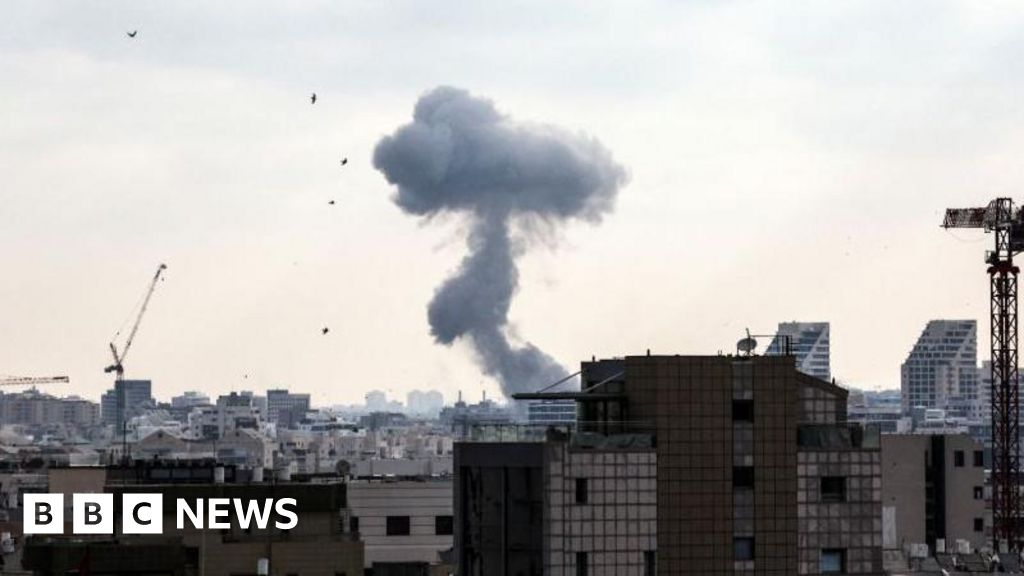Just after midnight on Thursday morning, Abdullah Ahmed left his sleeping wife and children in their small and crowded home in the battered al-Bureij camp in central Gaza and headed north.
The 31-year-old vegetable seller had heard that the nearby food distribution site recently opened by the Gaza Humanitarian Foundation (GHF), a secretive Israeli- and US-backed private organisation that began operations in the territory last month, would be handing out food at 2am.
To get there early and maximise his chance of grabbing a box of flour, oil, beans and other basics, Ahmed and some friends set out across the dangerous rubble-strewn roads.
Just reaching the vicinity of the centre, one of four run by the GHF, was dangerous. “All the time we could hear the sound of shells and stray bullets flying over us. We kept taking cover behind the ruins of houses. Whoever doesn’t take cover is exposed to death,” he said.
All last week, every night and most mornings, there were similar scenes across Gaza, as tens of thousands of hungry, desperate people converged on the GHF sites or waited at points where trucks loaded with UN flour were expected.
Every day, somewhere in the devastated territory, these gatherings had a similarly lethal conclusion when Israeli forces open fire.
Related: Israeli forces kill 11 Palestinians awaiting food trucks, say Gaza officials
The exact toll over the last 12 days is unclear. Medical authorities in Gaza say about 450 have died and thousands more have been injured. The Israel Defense Forces (IDF) admit that some have been hurt by their fire but have not admitted any deaths in shootings, which they say are directed at “suspects” who have posed a threat to their forces and only ever follow warning shots.
The GHF on Sunday said its model was working: “The Gaza health ministry, operated by Hamas, has been putting out false information on a daily basis which unfortunately media outlets have not verified before publishing.”
But 10 witnesses interviewed by the Guardian last week all broadly corroborated reports of repeated lethal incidents involving high numbers of casualties, as do the records of medical aid groups working in Gaza.
When Ahmed came close to the GHF site north of al-Bureij, he heard “heavy but intermittent gunfire from tanks, artillery and quadcopters”. “As we got closer to the site, gunfire resumed and a shell fell just a few metres away from me, and then shrapnel scattered, some of which hit me in my chest, neck and leg,” Ahmed said.
“I fell to the ground … I was trying to stop the blood flow from my neck using pieces of my clothes. My friends carried me a long distance until we reached the entrance of al-Bureij city, and there we found a car to take us to al-Aqsa Martyrs hospital.”
The witnesses, many interviewed in hospital after being wounded, described similar scenarios.
Between 27 May and 19 June, the Red Cross field hospital in Rafah received 1,874 “weapon-wounded patients” and recorded 18 “mass casualty incidents”, in which the vast majority of the patients reported to medical staff that they had been wounded while trying to access food at or near GHF sites.
According to Médecins Sans Frontières, most of the 285 casualties treated at its primary health clinic in al-Mawasi, Khan Younis and the Red Cross field hospital in Rafah on 11 and 12 June had been seeking supplies at the GHF’s distribution sites. These included 14 people who were declared dead upon arrival or shortly after.
Related: EU cites ‘indications’ Israel is breaching human rights obligations over conduct in Gaza
Food has become extremely scarce in Gaza since Israel imposed a tight blockade on all supplies throughout March and April, threatening many of the 2.3 million people who live there with a “critical risk of famine”. A kilo of sugar now costs 60 times more than before the war and a 25kg bag of flour is up to $500. Fuel for cooking is scarce, fresh vegetables almost unobtainable for many and there is no fresh meat.
Since the blockade was partly lifted last month, the UN has tried to bring in aid but it has faced major obstacles, including rubble-choked roads, Israeli military restrictions, continuing airstrikes and growing anarchy.
Many of the deaths in recent weeks have occurred when rumours spread of the possible arrival of aid trucks sent into Gaza by the World Food Programme (WFP), which was recently given permission by Israel to use northern entry points to Gaza, allowing more direct access to the areas where the humanitarian crisis is most acute.
But none of these deliveries have reached their destinations, all being stopped and offloaded, sometimes by criminal gangs but for the most part by desperate ordinary Palestinians, aid officials said.
The WFP said on Wednesday it had been able to dispatch just 9,000 tonnes of food aid into Gaza over the last four weeks, “a tiny fraction of what a population of 2.1 million hungry people needs”.
Even those who obtain food are at risk. Once supplies at the hubs run out, some of those who came too late rob those leaving. Witnesses described adults beating and robbing children to take their food outside one of the three GHF hubs in Rafah. Thieves stabbed an older man in the arm when he tried to hold on to a sack of food, weeping that his children had no food, one said.
Israel hopes the GHF will replace the previous comprehensive system of aid distribution run by the UN, which Israeli officials claim allowed Hamas to steal and sell supplies. A spokesperson said the IDF “will continue to facilitate humanitarian assistance in the Gaza Strip while making every effort to ensure that the aid does not reach the hands of the Hamas terrorist organisation”.
UN agencies and major aid groups, which have delivered humanitarian aid across Gaza since the start of 20-month-long war, have rejected the new system, saying it is impractical, inadequate and unethical. They deny there is widespread theft of aid by Hamas.
Aid workers in Gaza said some of the food provided by GHF was reaching Hamas, which has been seriously weakened but remains a significant actor in the increasingly fractured and chaotic territory. “They send people in to get it direct from the hubs, which is pretty simple because GHF are not vetting anyone,” said one senior UN official working in Gaza.
Palestinian witnesses said Israeli troops fired to prevent crowds from moving past a certain point before the centres opened or because people left the road designated by the military.
The IDF said its “operational conduct … is accompanied by systematic learning processes” and that it was looking into safety measures such as fences and road signs.
In a statement on Sunday, the GHF said it had distributed 38m meals in Gaza “without injury or any fatalities at or near their site” though said there had been “unfortunate cases where some [seeking aid] have attempted dangerous shortcuts through active war zones or gotten lost.
“Ultimately the solution is more aid, which will create more certainty and less urgency among the population. There is not yet enough capacity or food to feed everyone in need in Gaza. If the UN and other humanitarian organizations would join us we could scale aid across Gaza,” the GHF said.
The war was triggered by Hamas’s 7 October 2023 attack on southern Israel, in which militants killed about 1,200 people, mostly civilians, and took 251 hostage, of which 53 remain in Gaza, fewer than half of whom are believed to be still alive.
The death toll in Gaza since the war broke out has reached 55,600, mostly civilians, according to the health ministry.
Source link














